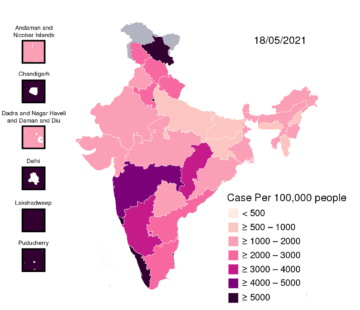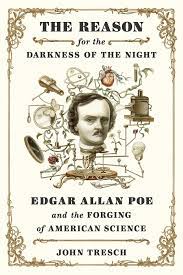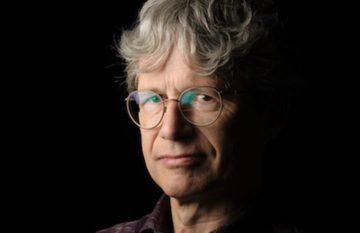Tim Adams in The Guardian:
 On 7 January this year, a day after the mob stormed the Capitol in Washington DC, a curious exchange occurred in the netherworld of global conspiracy. Alex Jones, the rasp-voiced mouthpiece of fake news for the past decade, was in conversation with the most visible leader of the previous day’s shocking events: Jacob Chansley, the self-styled “Q Shaman” who featured on the world’s front pages, in buffalo horns, animal skins and face paint. Jones, on his fake-news platform Infowars, with its million-plus viewers and sharers, had for years been the loudhailer of unhinged stories that included the belief that Hillary Clinton was the antichrist, that Michelle Obama was a man, that the Pentagon and George Soros had detonated a “homosexual bomb” that turned even frogs gay, that 9/11 had been a “false flag” operation and, most viciously, that the Sandy Hook school murders, in which 20 children and six teachers died, were staged by “crisis actors” to promote gun control. Jones had inevitably been among those who addressed the restive crowd at Donald Trump’s “Stop the Steal” march (having donated $50,000 for the staging of the rally) and calling for supporters to “get on a war footing” to defend the president. Two days later, however, when faced with the rhetoric of Chansley, whom he had invited on to his show to explain the insurrection, it seemed even he, America’s conspirator in chief, finally couldn’t take the lies any more.
On 7 January this year, a day after the mob stormed the Capitol in Washington DC, a curious exchange occurred in the netherworld of global conspiracy. Alex Jones, the rasp-voiced mouthpiece of fake news for the past decade, was in conversation with the most visible leader of the previous day’s shocking events: Jacob Chansley, the self-styled “Q Shaman” who featured on the world’s front pages, in buffalo horns, animal skins and face paint. Jones, on his fake-news platform Infowars, with its million-plus viewers and sharers, had for years been the loudhailer of unhinged stories that included the belief that Hillary Clinton was the antichrist, that Michelle Obama was a man, that the Pentagon and George Soros had detonated a “homosexual bomb” that turned even frogs gay, that 9/11 had been a “false flag” operation and, most viciously, that the Sandy Hook school murders, in which 20 children and six teachers died, were staged by “crisis actors” to promote gun control. Jones had inevitably been among those who addressed the restive crowd at Donald Trump’s “Stop the Steal” march (having donated $50,000 for the staging of the rally) and calling for supporters to “get on a war footing” to defend the president. Two days later, however, when faced with the rhetoric of Chansley, whom he had invited on to his show to explain the insurrection, it seemed even he, America’s conspirator in chief, finally couldn’t take the lies any more.
As the Q Shaman launched into his justification of the mob violence that had left five people dead, a diatribe involving reference to the supposed QAnon revelations that the Democratic party was a front for a satanic paedophile ring that Trump was destined to expose and destroy, Jones repeatedly interrupted him. When Chansley asked plaintively why he wouldn’t listen (“you’re a hero to me, man”), Jones cut him off: “Because you’re full of crap!” he yelled. “That’s why! Because every goddamned thing out of you people’s mouths doesn’t come true. I knew what you were on day one and I know what you are now and I’m sick of it! I’m sick of all these witches and warlocks… I can’t talk to you any more. Jesus Christ! Lord help me. Aaargh!”
More here.

 Marco D’Eramo in The New Left Review’s Sidecar:
Marco D’Eramo in The New Left Review’s Sidecar:
 Frankie Thomas in The Paris Review:
Frankie Thomas in The Paris Review: W-3, Bette Howland’s memoir of her stay in a psychiatric hospital following an overdose, was first published in 1974, and comes to us now following the reissue, last year, of her 1978 collection of stories,
W-3, Bette Howland’s memoir of her stay in a psychiatric hospital following an overdose, was first published in 1974, and comes to us now following the reissue, last year, of her 1978 collection of stories,  Is Poe really the most influential American writer? Note that I didn’t say “greatest,” for which there must be at least a dozen viable candidates. But consider his radiant originality. Before his death in 1849 at age 40, Poe largely created the modern short story, while also inventing or perfecting half the genres represented on the bestseller list, including the mystery (“The Murders in the Rue Morgue,” “The Gold-Bug”), science fiction (“The Facts in the Case of M. Valdemar,” “The Conversation of Eiros and Charmion”), psychological suspense (“The Tell-Tale Heart,” “The Cask of Amontillado”) and, of course, gothic horror (“The Fall of the House of Usher,” “The Masque of the Red Death,” the incomparable “Ligeia”).
Is Poe really the most influential American writer? Note that I didn’t say “greatest,” for which there must be at least a dozen viable candidates. But consider his radiant originality. Before his death in 1849 at age 40, Poe largely created the modern short story, while also inventing or perfecting half the genres represented on the bestseller list, including the mystery (“The Murders in the Rue Morgue,” “The Gold-Bug”), science fiction (“The Facts in the Case of M. Valdemar,” “The Conversation of Eiros and Charmion”), psychological suspense (“The Tell-Tale Heart,” “The Cask of Amontillado”) and, of course, gothic horror (“The Fall of the House of Usher,” “The Masque of the Red Death,” the incomparable “Ligeia”). When I’m stuck—and I’m stuck all the time—I look at “
When I’m stuck—and I’m stuck all the time—I look at “ T
T WILLIAM LOGAN: I doubt critics of a critical temper are dying out, but grumpy critics rarely remain grumpy very long. John Simon, whose temperament even I sometimes found captious, was still growling into his 90s. A number of critics of my generation and the generation after came out roaring in their 20s but stopped writing criticism within a decade. Critics who fail to go along to get along are punished, supposedly. It may not be entirely untrue — I’ve been told twice that I was on track to win some small award, which went sideways when one of the judges raged about my criticism. If that’s the punishment the world metes out, it’s a revenge small and pathetic — and hilarious.
WILLIAM LOGAN: I doubt critics of a critical temper are dying out, but grumpy critics rarely remain grumpy very long. John Simon, whose temperament even I sometimes found captious, was still growling into his 90s. A number of critics of my generation and the generation after came out roaring in their 20s but stopped writing criticism within a decade. Critics who fail to go along to get along are punished, supposedly. It may not be entirely untrue — I’ve been told twice that I was on track to win some small award, which went sideways when one of the judges raged about my criticism. If that’s the punishment the world metes out, it’s a revenge small and pathetic — and hilarious. The
The  I was startled when the phone rang while I was shaving. It was 7 am. The press attaché for Giorgio Armani called me in my Milan hotel room to tell me the designer wanted to have dinner with me that night. It was more a summons than an invitation. Mr. Armani was the sacred cow, the designer Mr. Fairchild was enthralled with, which is why almost all of his senior editors in New York City wore only Armani’s clothing—purchased with generous press discounts supplemented by the occasional, ostensibly forbidden unreported gift.
I was startled when the phone rang while I was shaving. It was 7 am. The press attaché for Giorgio Armani called me in my Milan hotel room to tell me the designer wanted to have dinner with me that night. It was more a summons than an invitation. Mr. Armani was the sacred cow, the designer Mr. Fairchild was enthralled with, which is why almost all of his senior editors in New York City wore only Armani’s clothing—purchased with generous press discounts supplemented by the occasional, ostensibly forbidden unreported gift. Research conducted by Qiang et al has discovered a link between a protein in red blood cells and age-related decline in cognitive performance. Published in the open access journal PLOS Biology on 17th June 2021, the study shows that depleting mouse blood of the protein ADORA2B leads to faster declines in memory, delays in auditory processing, and increased inflammation in the brain. As
Research conducted by Qiang et al has discovered a link between a protein in red blood cells and age-related decline in cognitive performance. Published in the open access journal PLOS Biology on 17th June 2021, the study shows that depleting mouse blood of the protein ADORA2B leads to faster declines in memory, delays in auditory processing, and increased inflammation in the brain. As